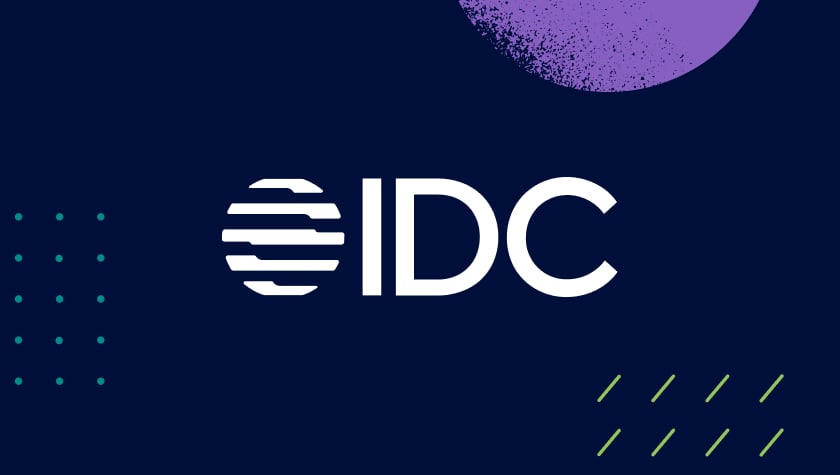
Feedzai’s Ruxandra Aldea recently attended the Women in Payments Canada Symposium held in Toronto. The conference brought together some of the top leaders in financial services who shared their insights and perspectives on the payments landscape and a host of other topics. Here are the key takeaways from the WiP Symposium.
Financial Institutions Need Smart and Connected Data
Challenges related to data and digital trust were one of the key questions raised at the WiP Symposium. An exponential expansion of data due to the rise of digital banking and payments leads to increased infrastructure costs. The question is how can you drive maximum outcomes from this data?
The answer is in two parts. First, data has to be smart. Artificial intelligence and machine learning opens the doors to effective usage of data which leads to greater accuracy. For example, using AI and machine learning algorithms banks can identify data points that offer the highest confidence interval in which transactions are less risky and which pose a higher risk of financial crime. From there, more productive decisions can be made.
We already experience the benefits of AI productivity in our daily lives. We experience it whenever we enter a Google search and the search engine automatically fills out a suggested phrase or term. Or when we’re shopping on Amazon and we get suggested items to complement our purchase. For financial services, the challenge in adopting AI relates to access to qualified resources, overseeing change management, and ensuring sustainability and trust. In order for FIs to implement a robust AI program they need to know that the solution is making the “right” decisions. Most importantly, that these decisions are both explainable and transparent.
Second, data has to be connected. If data is used in isolation per use case, per channel, or per product it can result in a pixelated view of risk. A more efficient way is to consider fraud data points on the same canvas as FinCrime and digital data. This approach enhances an FI’s predictive capabilities. This is the RiskOps approach which is solving data silos issues, leading to a better customer experience.
Identity Theft and ATO Attacks are Top Consumer Concerns
Another key takeaway from the WiP Symposium was what is on the mind of consumers. Today’s consumers are primarily concerned about two things.
- Identity theft. They worry what could happen to them if their identity is compromised by a fraudster.
- Account takeover. Consumers also fear that their money will be stolen using an account takeover attack.
There is a historical precedent for these concerns. Fraudsters have spent years attacking banks’ systems and apps by introducing malware in active sessions. Once installed, these malicious programs can take over an active banking session and perform unauthorized transactions.
The good news is that protections against these threats have made significant strides in recent years. Technology has progressed to the point where it can not only detect a potential ATO attack but can block unauthorized digital access as it happens.
The bad news is that fraudsters are simply shifting their focus away from banks and toward the next most vulnerable point in the chain: consumers.
Fraudsters use tactics like social engineering to deceive consumers into authorizing payments. These tactics can include CEO fraud, romance scams, or marketplace scams. In fact, in some geographies losses from scams are now outpacing ATO losses.
While identity theft and ATO attacks are always cause for concern, banks should consider how to protect their customers from the rising threat of scams.
Data-Sharing is Key to Fighting Financial Crime
Another key topic discussed at the WiP Symposium was how to manage data. As the payments landscape evolves, so too must data enrichers. Fortunately, we’re seeing data enrichers evolve fast to keep pace as new payment methods are introduced. This is aided by the ISO20022 messaging standard that provides even richer information with payments.
As data enrichers evolve, banks can realize additional enhancements to other functions. For example, the traditional know your customer (KYC) function can be enhanced with know your user (KYU) capabilities. KYU is built on collecting insights of users from each session, including the device they normally use, details of digital identity like email addresses and phone numbers, and biometric identifiers. This information is used to create a baseline of user profiles. Combining user profiles with real-time scoring quickly detects unusual behaviors that are indicative of financial crime.
Predictive AI and machine learning models are also enhanced by collaborative uses of aggregated data. In many geographies, central networks for clearing and settlements have developed and are sharing their own scoring with network participants.
The Future of Data and Digital Trust
What does the future hold for data and trust? It’s difficult to say since the payments landscape moves rapidly. As one participant at the WiP Symposium joked, what’s relevant now won’t be relevant in 15 minutes. The best banks and FIs can do is to prepare for the industry’s most significant shifts. These include:
- Open Banking. Open banking regulations have already taken root in the EU. There are reasons to believe similar Open Banking rules will be introduced in North America. While it’s not clear when these regulations will go into effect, banks can understand how open banking will impact the fraud prevention domain. For example, when the UK’s PSD2 was introduced, regulators responded by requiring Strong Customer Authentication (SCA) measures. North American banks can look to these regulations to inform their own open banking requirements.
- Real-Time Payments. Payments modernization initiatives are now focused on real-time delivery and are active in roughly 80 worldwide markets. The cost structures for many real-time payments use cases are attractive and are likely to drive adoption. For example, request to pay has been prioritized for a number of use cases, including in B2C disbursements. This use case also has the potential to make a positive impact in retail and reduce the hefty costs associated with store checkout counters. As real-time payments use cases and volumes take off, additional threats will arise; financial institutions need nimble platforms that can adapt quickly.
- Buy Before You Build. Many financial services organizations still follow a “we build things in-house” mindset when it comes to major investments. Unfortunately, this is often the source of inertia that stalls AI and machine learning advancements in financial crime. Fortunately, there is growing recognition that FIs should focus on their core competencies, specifically products and customers, while collaborating with specialized FinTech vendors to bring scale, expertise, and resources to respond faster and more effectively to emerging financial crime threats.
Ready to move forward with your own AI and machine learning projects? Schedule a demo with our team to get started.
Share this article:
Ruxandra Aldea
Ruxandra is Feedzai’s VP of Strategic Accounts, North America. She is an international FinTech leader with 20 years’ of expertise in global organizations including Feedzai, Finastra, Temenos, and Fiserv. Her experience in FinTech encompasses areas such as payments, FinCrime, core and digital banking. Throughout her career in technology, she held senior leadership roles in sales and marketing, product and service management in both start-up and Fortune 500 firms. She has a Master of Business Administration Degree from Simon Fraser University in Canada and, through her lifelong learning mindset, has also recently completed an Executive Education program in Strategy & Innovation at MIT Sloan. Ruxandra is also an active member, speaker and mentor in the Women in Payments Association, supporting career development and industry education for women in financial services.
Related Posts
0 Comments6 Minutes
A Guide to Secure, Seamless User Authentication in Payments
Online payments demand a delicate balance between security and user experience. Consumers…
0 Comments7 Minutes
Combating Emerging Scams in the Philippines
The Philippines is witnessing remarkable growth in digital banking. Unfortunately, a…
0 Comments5 Minutes
Feedzai is a Leader in the 2024 IDC MarketScape for Enterprise Fraud Solutions
Exciting news! Feedzai, the world’s first RiskOps platform, is proud to have been named a…

